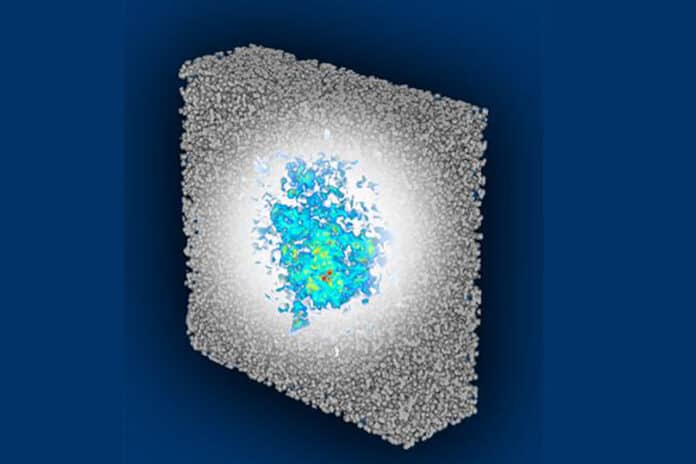In disordered systems, Anderson localization is the halting of diffusive wave propagation. Anderson’s localization of light in three dimensions has remained elusive despite intense research over the past 40 years, raising the question of its very existence.
A team of researchers has solved a decades-long puzzle concerning whether optical waves may be trapped in three-dimensional randomly packed micro or nanoparticles, potentially opening up new applications for lasers and photocatalysts.
Electrons can travel freely through a substance to conduct electricity or become stuck and behave as insulators. This is determined by the number of randomly distributed faults in the material.
The Anderson localization hypothesis, developed by Philip W. Anderson in 1958, has revolutionized condensed physics, extending to both quantum and classical domains, including electrons, acoustic waves, water, and gravity.
Despite 40 years of research, the specific mechanism of this concept in the trapping or localization of electromagnetic waves in three dimensions remains unknown.
Researchers led by Prof. Hui Cao have found a definitive answer to whether light can be localized in three dimensions. This discovery could pave the way for new directions in the basic study and practical applications of 3D localized light.
The search for 3D Anderson localization of electromagnetic waves has lasted several decades, with numerous failed attempts.
There have been numerous experimental reports of 3D light localization. However, they have all been called into question due to experimental artifacts, or the observed phenomena have been attributed to physical processes other than localization.
These failures led to an intensive dispute on whether Anderson’s localization of electromagnetic waves even existed in 3D random systems. Cao and her colleagues resorted to the “indignity of numerical simulation,” Philip W. Anderson called it in his 1977 Nobel Prize lecture, because eliminating all experimental artifacts is extremely difficult. However, executing three-dimensional computer simulations of Anderson localization has long been difficult.
Cao, the John C. Malone Professor of Applied Physics and Electrical Engineering and Physics, said, “We could not simulate large, three-dimensional systems because we don’t have enough computing power and memory. People have been trying various numerical methods. But it was impossible to simulate such a large system to show whether localization exists.”
The team has recently worked with Flexcompute, a startup that has recently made a breakthrough in accelerating numerical solutions by orders of magnitude with their FDTD Software Tidy3D.
She said, “It’s amazing how fast the Flexcompute numerical solver runs; some simulations that we expect would take months are done in just 30 minutes. This allows us to simulate many different random configurations, system sizes, and structural parameters to see whether we can get three-dimensional localization of light.”
The researchers from yale university discovered that it is impossible to localize light in three-dimensional random aggregates of particles of dielectric materials such as glass or silicon, explaining the failures of decades of intense experimental efforts.
First, they demonstrated that localizing light in three-dimensional random collections of particles formed from dielectric materials such as glass or silicon is challenging, explaining the failures of decades of rigorous experimental efforts. Second, they demonstrated unequivocal evidence of Anderson’s localization of electromagnetic waves in random packings of metallic spheres.
Anderson localization continues even after common metals such as aluminum, silver, and copper are removed, demonstrating a robust and powerful effect.
Cao said, “When we saw Anderson localization in the numerical simulation, we were thrilled; it was incredible, considering that there has been such a long pursuit by the scientific community.”
Metallic systems have long been neglected due to their light absorption. Anderson’s localization persists despite the loss of common metals like aluminum, silver, and copper.
The researcher said, “Surprisingly, even though the loss was not small, we can still see the evidence of Anderson’s localization. That means this is a very robust and strong effect.”
The finding answers longstanding questions and offers new possibilities for lasers and photocatalysts. The confinement of light in three dimensions in porous metals can improve optical nonlinearities, light-matter interactions, control random lasing, and control energy deposition with diverse applications.
Journal Reference:
- Yamilov, A., Skipetrov, S.E., Hughes, T.W. et al. Anderson localization of electromagnetic waves in three dimensions. Nature Physics. DOI: 10.1038/s41567-023-02091-7
